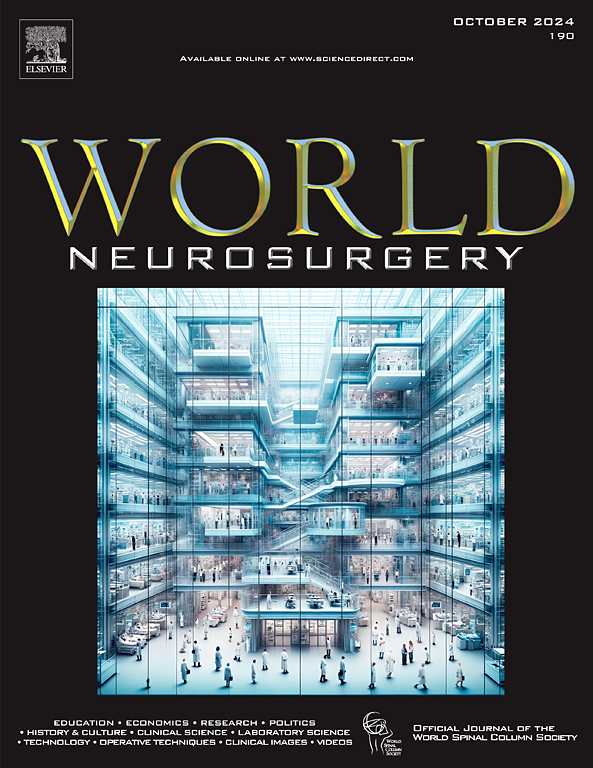Endoscope-Assisted Anterior Odontoid Screw Fixation for Odontoid Fracture
IF 1.9
4区 医学
Q3 CLINICAL NEUROLOGY
引用次数: 0
Abstract
Objective
Odontoid fractures in older adults often lead to substantial morbidity and mortality. This study explores the outcomes of water-based endoscope-assisted anterior odontoid screw (AOS) fixation, a minimally invasive technique, in managing these fractures.
Methods
Six patients (5 men, 1 woman) underwent endoscope-assisted AOS fixation for displaced odontoid fractures. Surgical procedures and follow-up assessments were reviewed retrospectively. Inclusion criteria included type IIa or type IIb odontoid fractures with potential nonunion/instability.
Results
Surgical procedures demonstrated no intraoperative complications. The mean operation time was 82 minutes (69–107 minutes), with an average estimated blood loss of 28 mL (10–50 mL). Among the 5 patients followed for >6 months, 4 (80%) showed successful fusion through computed tomography. Screw-related complications were observed in 1 patient.
Conclusions
AOS fixation is advocated for managing unstable odontoid fractures and providing strength and fracture union rates without impending cervical motion. Incorporating minimally invasive approaches, particularly endoscopic techniques, has garnered interest. The novel endoscope-assisted AOS fixation method, unlike prior approaches, begins with endoscopic guidance and minimal incisions, potentially reducing the risk of neurovascular injury. This novel technique shows promise as an effective strategy for addressing unstable odontoid fractures.
内窥镜辅助齿状突前路螺钉固定治疗齿状突骨折:技术要点。
本文章由计算机程序翻译,如有差异,请以英文原文为准。
求助全文
约1分钟内获得全文
求助全文
来源期刊

World neurosurgery
CLINICAL NEUROLOGY-SURGERY
CiteScore
3.90
自引率
15.00%
发文量
1765
审稿时长
47 days
期刊介绍:
World Neurosurgery has an open access mirror journal World Neurosurgery: X, sharing the same aims and scope, editorial team, submission system and rigorous peer review.
The journal''s mission is to:
-To provide a first-class international forum and a 2-way conduit for dialogue that is relevant to neurosurgeons and providers who care for neurosurgery patients. The categories of the exchanged information include clinical and basic science, as well as global information that provide social, political, educational, economic, cultural or societal insights and knowledge that are of significance and relevance to worldwide neurosurgery patient care.
-To act as a primary intellectual catalyst for the stimulation of creativity, the creation of new knowledge, and the enhancement of quality neurosurgical care worldwide.
-To provide a forum for communication that enriches the lives of all neurosurgeons and their colleagues; and, in so doing, enriches the lives of their patients.
Topics to be addressed in World Neurosurgery include: EDUCATION, ECONOMICS, RESEARCH, POLITICS, HISTORY, CULTURE, CLINICAL SCIENCE, LABORATORY SCIENCE, TECHNOLOGY, OPERATIVE TECHNIQUES, CLINICAL IMAGES, VIDEOS
 求助内容:
求助内容: 应助结果提醒方式:
应助结果提醒方式:


